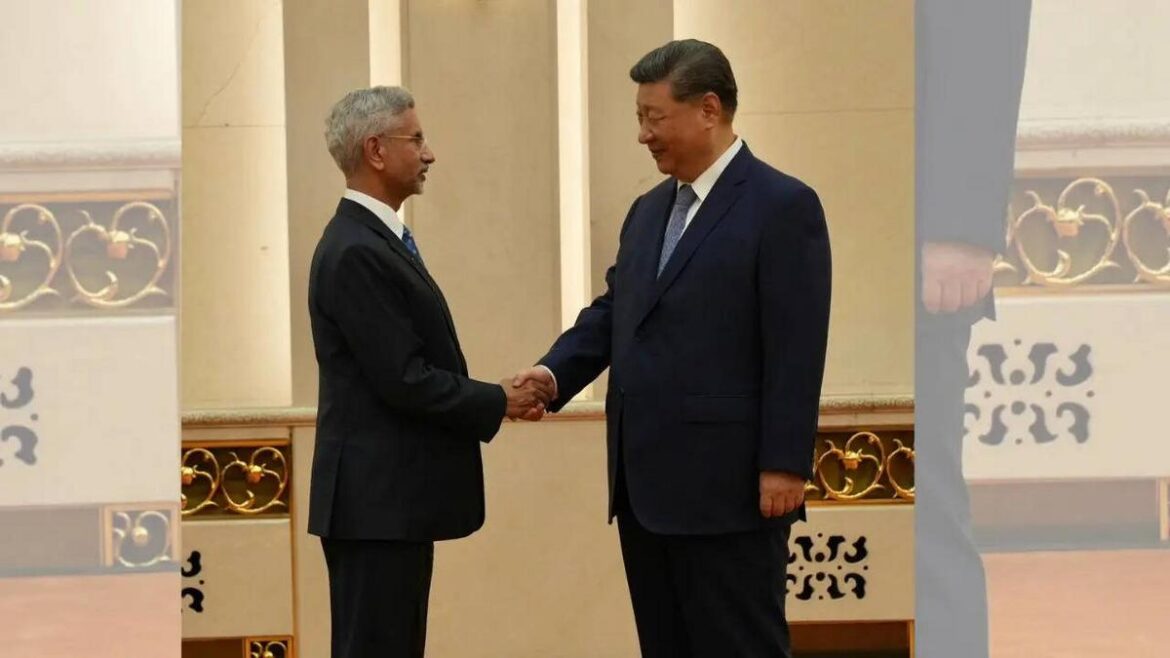In a rare and closely watched diplomatic encounter, External Affairs Minister S. Jaishankar met Chinese President Xi Jinping on Tuesday in Tianjin, breaking a long period of limited high-level engagement between India and China. This meeting, which took place ahead of the Shanghai Cooperation Organisation (SCO) Foreign Ministers’ summit, marks the first time Jaishankar has been to China since the Galwan Valley clashes in June 2020.
Timeline of Events
Jaishankar landed in China on July 14 for a two-day trip to attend the SCO Foreign Ministers’ Meeting. During his stay, he held talks with both President Xi Jinping and Chinese Foreign Minister Wang Yi. The visit gains significance as it comes after a rough chapter in India-China relations, mainly triggered by the deadly Galwan Valley clash that escalated military and diplomatic tensions between the two nuclear neighbors.
The Galwan incident in 2020 was a turning point. Since then, both sides have adopted a cautious approach. According to the Indian government, troop disengagement completed at key border points in October 2023, but many unresolved concerns remain.
Highlights From the Visit
- Jaishankar’s first visit to China in five years.
- First meeting with President Xi since the Galwan conflict.
- Discussion on future cooperation under the SCO framework.
- Talks centered on border peace and the path toward restoring mutual trust.
Official Statements: Cautious Optimism
In a brief statement shared through his social media, Jaishankar said he conveyed messages from Prime Minister Narendra Modi and President Droupadi Murmu to President Xi. Officials have not shared further details of the discussions, but the gesture indicates India’s willingness to keep dialogue open.
“Conveyed messages from PM @narendramodi and President Droupadi Murmu during the call on President Xi Jinping. Value the guidance of our leaders in that regard,” Jaishankar wrote.
He added that recent efforts between both sides have led to “good progress” and reiterated the importance of continuing efforts to reduce tensions along the Line of Actual Control (LAC).
Border Stand-off and Diplomatic Thaw
Relations between India and China hit a low following the Galwan conflict, where soldiers from both sides were killed during a face-off in the high-altitude region of eastern Ladakh. While both countries kept diplomatic channels open, there was visible chill in state-level visits until recently.
In October, the final disengagement of troops at two critical flashing points was completed. It provided what some call a cautious opening to resume fuller diplomatic engagement. Jaishankar’s visit seems to be an extension of that reset.
Talks With Wang Yi
Before meeting Xi, Jaishankar sat down with Chinese Foreign Minister Wang Yi. The Indian Foreign Minister underlined that although both sides have made steps toward improving bilateral ties, more work remains to address ground realities at the border.
He emphasized reducing friction and restoring stability, particularly in sensitive border zones. Their meeting revisited previous diplomatic exchanges, including National Security Adviser Ajit Doval’s visit to Beijing in December, during which boundary negotiations were held with Wang under the Special Representatives dialogue format.
Community Response: Reserved Hope
Back home, reactions to the visit have ranged from cautious approval to skepticism. Many observers see the China trip as necessary but warn against over-expecting immediate breakthroughs. Trust remains fragile.
Security analysts and foreign policy experts have stressed the importance of active diplomacy but questioned the timing amid China’s regional posture and growing influence within the SCO. Others argue that without tangible advances on the ground, such meetings may only offer symbolic gains.
In informal chatter across news portals and forums, users expressed both relief and concern. Some voiced support for continued engagement, while others felt wary given recent history.
What’s Next?
The path ahead looks steady but slow. With SCO meetings providing a platform for multilateral dialogue, there’s room for cautious engagement, but the real test lies in future military and policy decisions along the border.
Here’s what to watch going forward:
- Border Talks: Will there be more fresh agreements on remaining border stand-offs?
- Military Posture: Can both sides begin to demobilize and deescalate zones beyond those already disengaged?
- Trade and Cooperation: Will there be visible recovery in trade ties and cooperative programs under the SCO?
- Public Diplomacy: What messages will follow, and how are state media covering these interactions?
Closing Thoughts
Whatever your read on this meeting, it’s a signal. Dialogue, even cautious and limited, is happening. And in the current climate, that may be the best place to begin. Will it lead to a better chapter in India-China relations? It’s too early to say.
For now, the takeaway is this: lines are open, and diplomacy, with all its slow rhythm and quiet hopes, is back at work.

